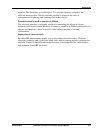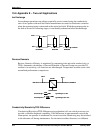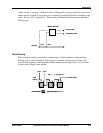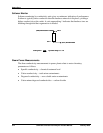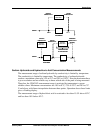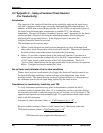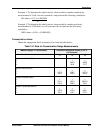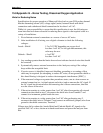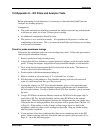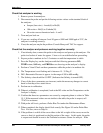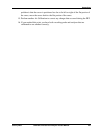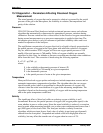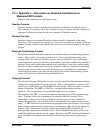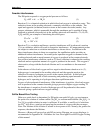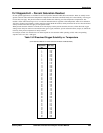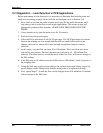
Appendices
January 2009 UDA2182 Universal Dual Analyzer Product Manual 219
15.9 Appendix H – DO Probe and Analyzer Tests
Before performing air leak detection, it is necessary to determine that both Probe and
Analyzer are working properly.
Assumptions:
• The probe and analyzer should be connected, the analyzer powered-up, and the probe
in the process water for at least 24 hours prior to testing.
• No additional configuration should be done.
• The process is as it would be normally. All equipment in the process is online and
contributing to the process. This is to ensure that the Probe and Analyzer are working
in a known environment.
Check for probe membrane leakage
If the probe has membrane leaks, incorrect readings may occur. Follow this procedure to
check for probe membrane leakage:
1.
Remove probe from analyzer and process.
2.
Using either the flow chamber or original protective adapter, screw this piece on the
probe. If using the adapter, wrap electrical tape around the adapter to seal the holes.
3.
Next, wrap electrical tape around the hole on the side of the probe. The intent is to
create a reservoir for the sealed probe.
4.
Position probe with the membrane pointing up.
5.
Make a solution of salt water using 2 T. of salt and 8 oz. of water.
6.
Fill the probe (via the adapter or flow chamber opening) with the salt water until
water is overflowing from the top of the reservoir.
7.
If using the adapter or a PVC flow through chamber, place a wire (uncurled paper
clip) in adapter or flow through chamber opening such that one end is immersed in
the salt water solution. If using a Stainless Steel (SS) flow chamber, you do not need
the wire.
8.
Using a DVM that can measure Mohms, attach one DVM lead to the paper clip (or
touch side of SS flow through chamber) and the other DVM lead to the cathode
(black lead). Measure the impedance between the Cathode and the wire (probe side).
If the probe has no leakage problem, this resistance will be greater than 1 Mohm. Go
to Step 10. If the reading is in the k ohms or ohms range, there is a leak in the
membrane, which can cause erratic readings in the probe. Stop any further testing
until the probe is replaced.
9.
If you are here, it has been confirmed that there are no membrane leaks in the DO
probe. Remove the tape and wire from probe and rinse probe with tap water. Go to
Steps 9 – 16 on the following pages.



